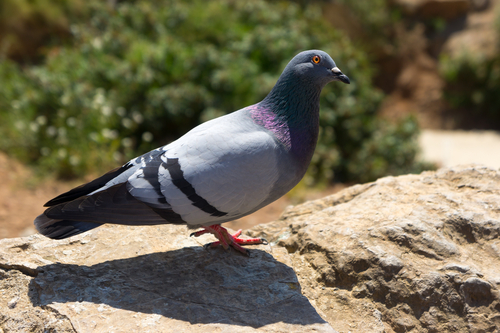 Lloyd Pest Control Services Ltd. Presents Useful Information about Birds
Lloyd Pest Control Services Ltd. Presents Useful Information about Birds
Birds Can Be Considered Pests in Large Numbers
While many birds are friends of humans, eating mosquitoes and other harmful insects, some birds can be considered pests, especially when they’re in large numbers. If you suspect you might have a bird problem, Lloyd Pest Control Services Ltd. is there to offer you the right kind of support you need in Oshawa, the Durham Region and surrounding areas.
Birds & Bird Mites
First brought to North America from Europe in the late 1890s, starlings have greatly increased in number and spread across most of the continent since that time. Adult starlings are chunky and the size of robins. House sparrows are one of the most abundant songbirds in North America and among the most widely distributed birds on the planet. Not actually sparrows but Old World Weaver Finches, these birds become nuisances when they congregate on buildings. Their droppings are not only unsightly, but can harbour bacteria and/or corrode roofs, while their nests can block air vents or cause fires.
However, the greatest threat to your health when a bird chooses to nest in or around your home is the invasion of bird mites that usually accompany it. Most bird mites develop in 5-12  days with optimal temperatures and host presence. Their short life cycle makes it possible for their population to attain tens of thousands of mites in bird nests during the rearing of baby birds. Their piercing mouthparts allow bird mites to take blood meals from their bird hosts. Although they only inadvertently bite humans, birds should be discouraged from building nests in or adjacent to buildings. In order to prevent birds from nesting, you should close all openings large enough for birds to enter attics, soffits and similar areas. The installation of hardware cloth, sheet metal or similar materials can also prevent birds from nesting and/or roosting on porches, breezeways and other exterior sites. You can also disrupt nest-building efforts by removing partially completed nests in shrubbery and on air conditioners and windowsills.
days with optimal temperatures and host presence. Their short life cycle makes it possible for their population to attain tens of thousands of mites in bird nests during the rearing of baby birds. Their piercing mouthparts allow bird mites to take blood meals from their bird hosts. Although they only inadvertently bite humans, birds should be discouraged from building nests in or adjacent to buildings. In order to prevent birds from nesting, you should close all openings large enough for birds to enter attics, soffits and similar areas. The installation of hardware cloth, sheet metal or similar materials can also prevent birds from nesting and/or roosting on porches, breezeways and other exterior sites. You can also disrupt nest-building efforts by removing partially completed nests in shrubbery and on air conditioners and windowsills.
We would be happy to help you with this problem in a phone call, an email or a visit to our store. Contact us today!
Pigeons
Of the same family as doves, pigeons are stout-bodied birds with short necks and short, slender bills with a fleshy cere (the waxy fleshy covering at the base of the upper beak). The most common example is the feral rock pigeon, which is common in many cities and small rural areas. Perhaps you have seen pigeons on street signs, traffic lights and ledges of buildings. Homeowners, property managers and maintenance professionals are constantly dealing with bird problems. Maintenance costs certainly add up, especially if it’s required daily. Bird droppings are acidic and can eat through paint, damaging properties and clogging drains. Not to mention the diseases associated with pigeons! Pigeons tend to breed and roost in groups, which means a large amount of feces is produced. The accumulation of feces poses a health hazard to the general public. Pigeons have been associated with the spread of a variety of diseases, including histoplasmosis and cryptoccosis. Histoplasmosis is a disease caused by a fungus that grows in pigeon droppings.
We would be happy to help you with this problem in a phone call, an email or a visit to our store. Contact us today!
